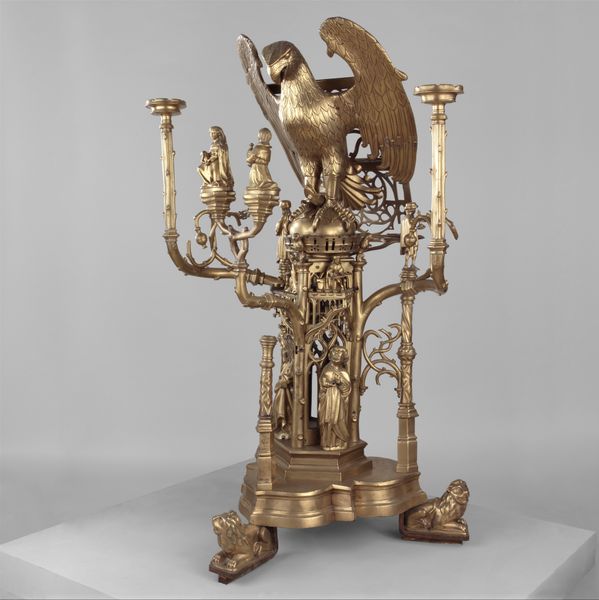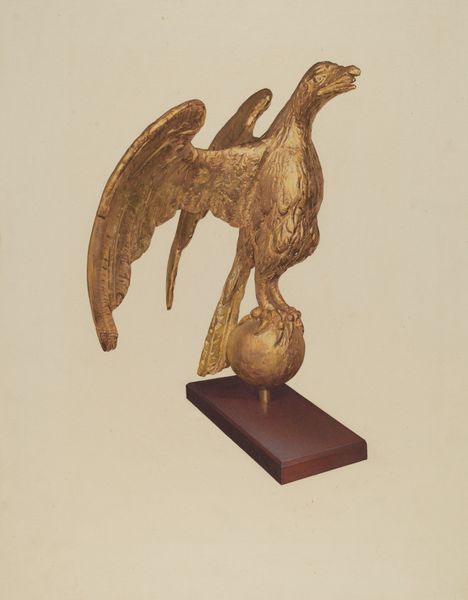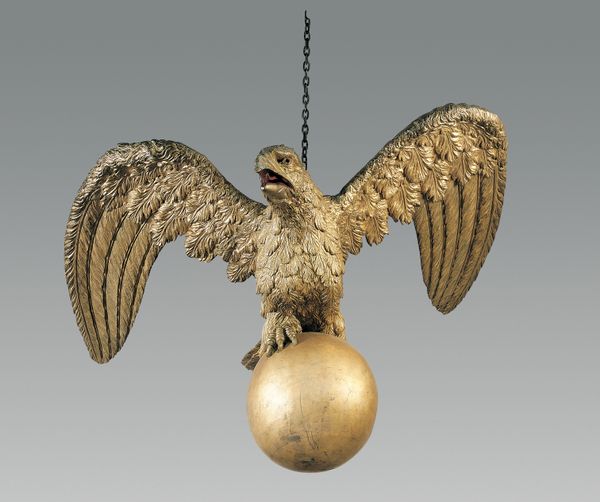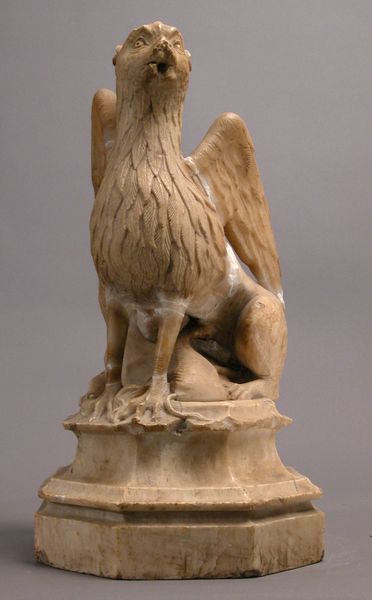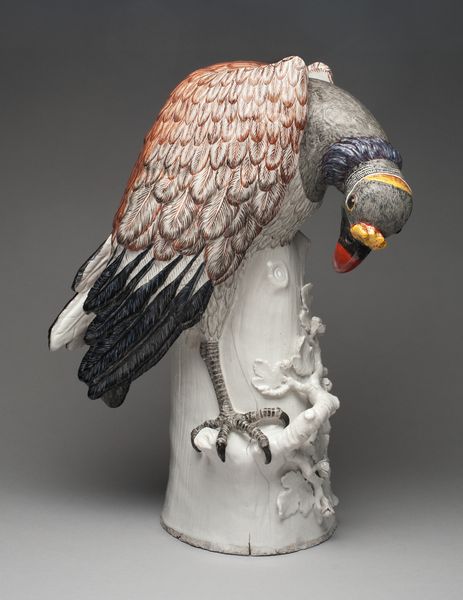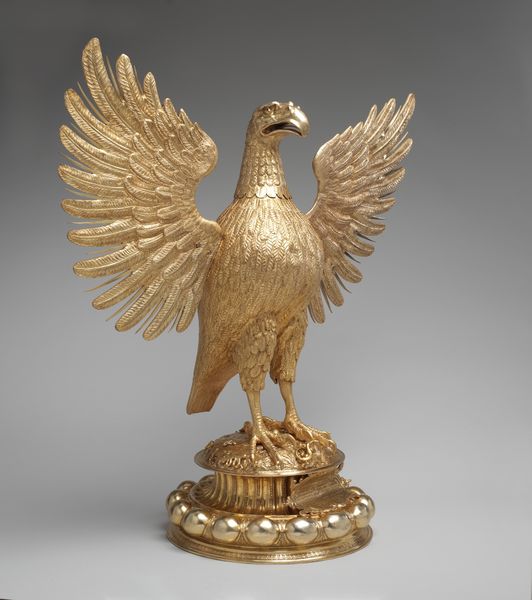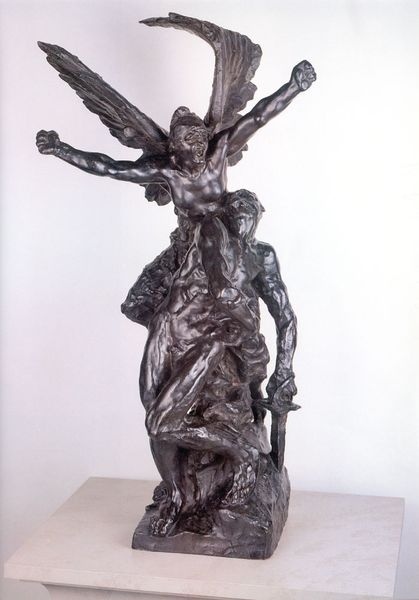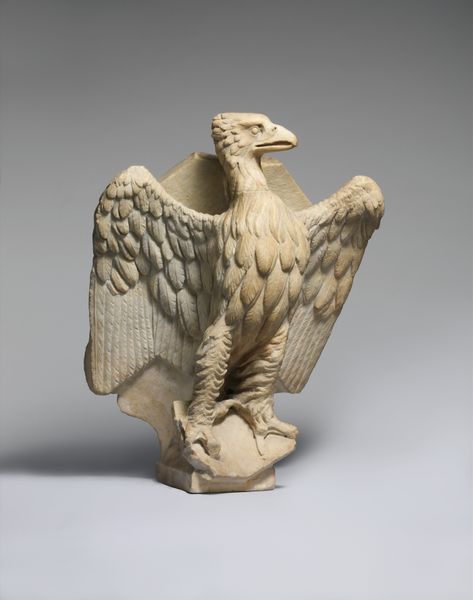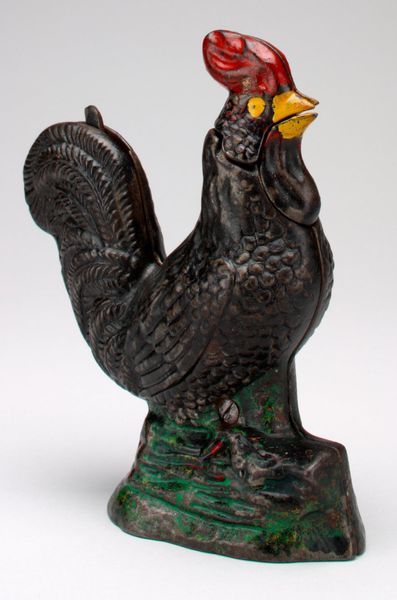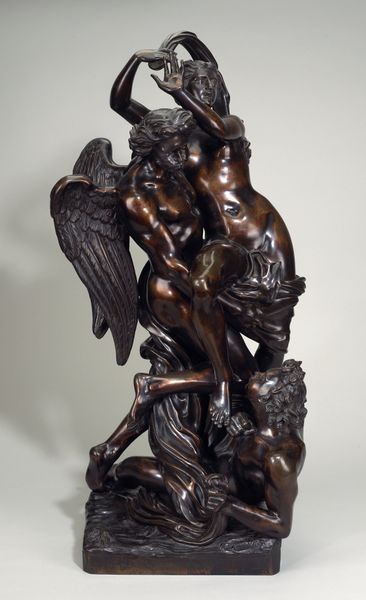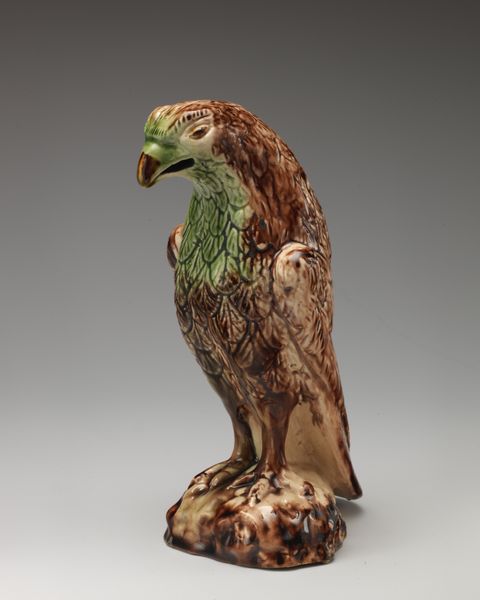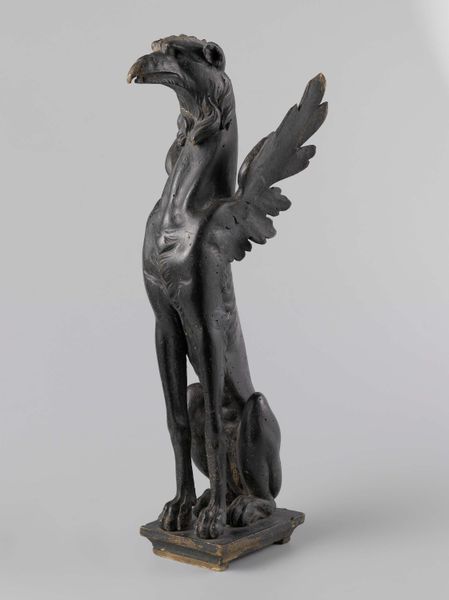
bronze, sculpture
statue
animal
sculpture
bronze
sculpture
history-painting
academic-art
realism
statue
Copyright: Public domain
Curator: Here we have Jean-Léon Gérôme's bronze sculpture, "Dying Eagle of Waterloo," created in 1902. What strikes you immediately? Editor: The pathos, really. The sheer drama of the bird's posture, the way it claws at whatever that foliage is below. It looks utterly defeated, broken even. Curator: Absolutely. Gérôme was tapping into a powerful sentiment here. The eagle, of course, was a symbol of Napoleonic France. This work comes decades after Waterloo, but the memory, the *politics* of that defeat, still resonated deeply in French society. It's a representation of lost imperial glory. Editor: And consider the materiality of it. Bronze is a weighty, traditionally *heroic* material, but here it's used to depict something falling apart. The contrast is quite deliberate, and that spear-like fragment sticking out gives the idea of the process that generates the destruction. It shows what making war really does. Curator: Precisely. And think about the academic art world at the turn of the century. Sculptures like this, readily reproducible, could be disseminated widely, solidifying a particular historical narrative and appealing to patriotic sensibilities. Editor: The texture, too—look how the feathers are individually rendered, giving it a life-like quality despite the inherent stillness of the medium. It invites a tactile engagement, a desire to understand the skill and labor that went into its crafting. You wonder what kind of craftsman actually did this work. Curator: Gérôme, though celebrated in his time, fell somewhat out of favor with the rise of modernism, precisely because of his commitment to academic realism and historical subject matter. But it's precisely this dedication to representing and reflecting on specific historical moments that make his work, and "Dying Eagle of Waterloo" in particular, so compelling for us today. It asks how should war, which is clearly linked to suffering and degradation, be remembered? Editor: I agree. It is a complex interplay of defeat and artistic achievement, questioning how materials can betray inherent value if war gets involved, like metal here. Curator: So, let us move to our next masterpiece...
Comments
No comments
Be the first to comment and join the conversation on the ultimate creative platform.
